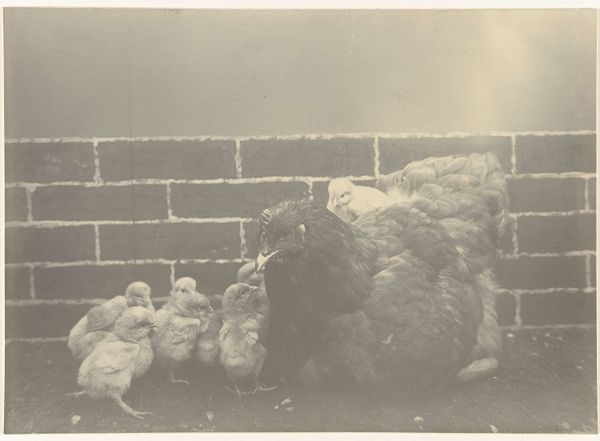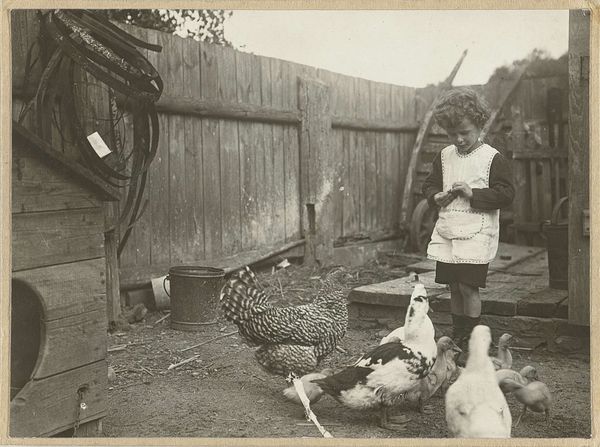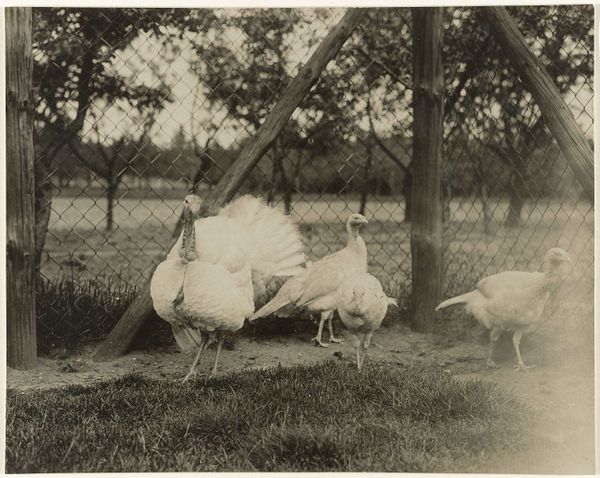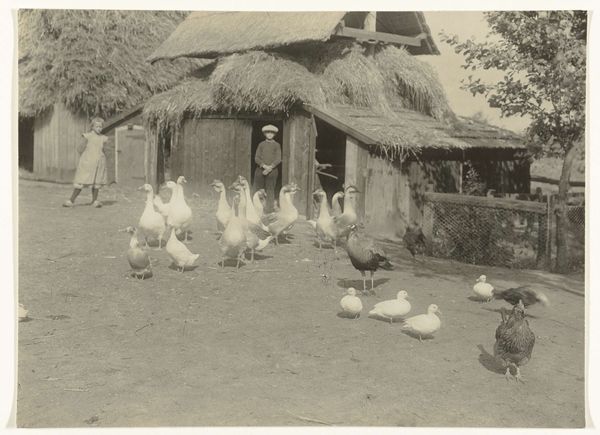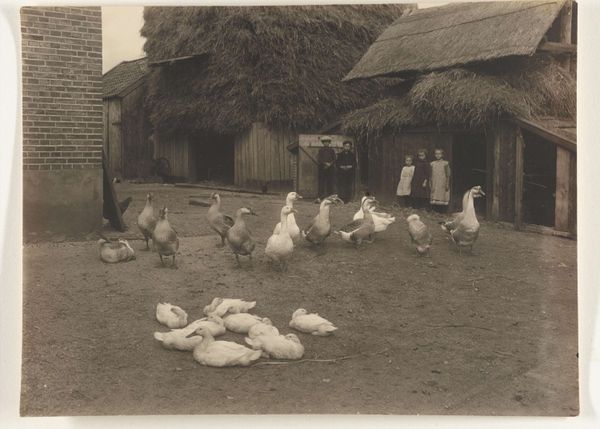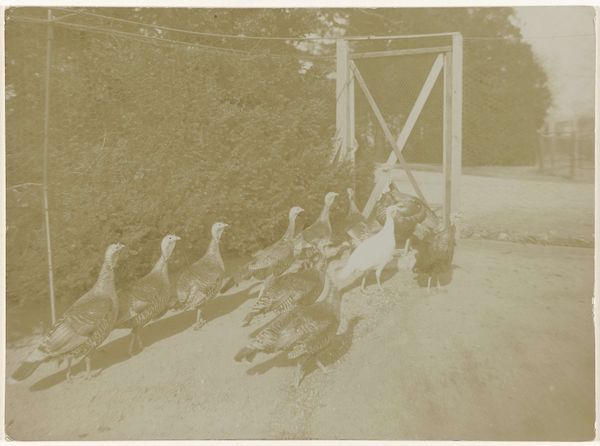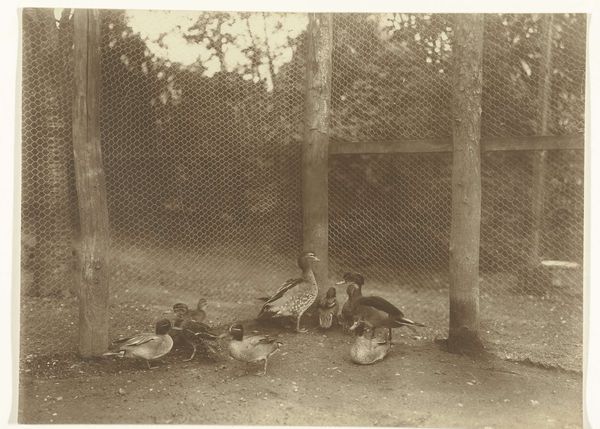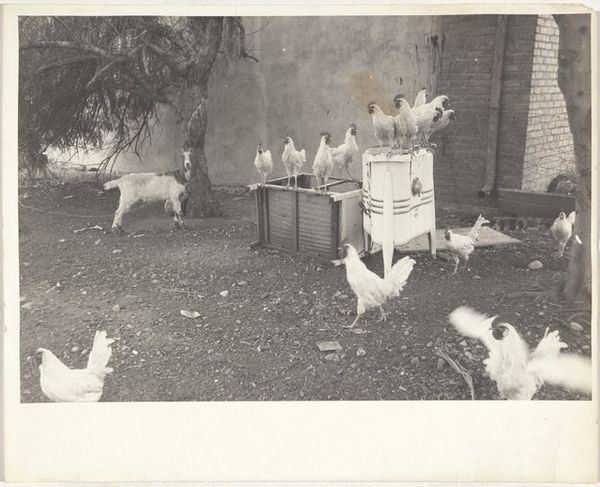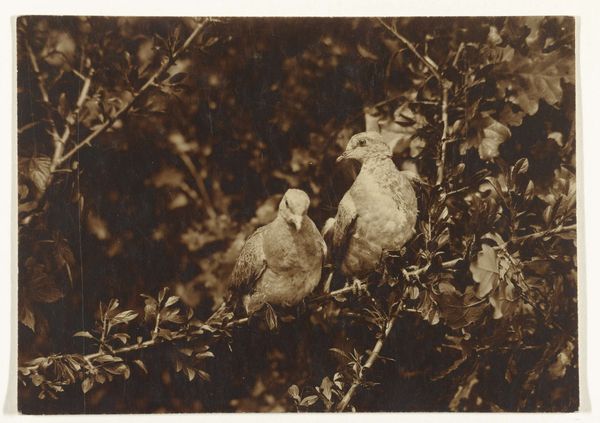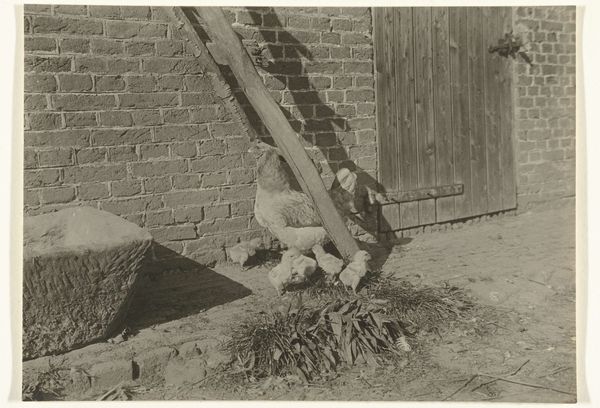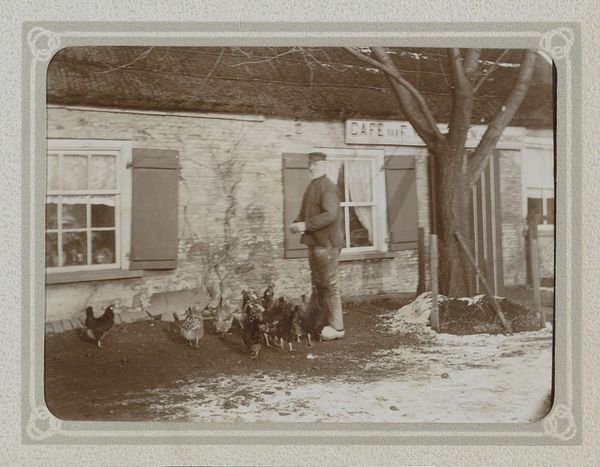
photography, gelatin-silver-print
#
print photography
#
still-life-photography
#
landscape
#
photography
#
gelatin-silver-print
#
genre-painting
#
realism
Dimensions: height 167 mm, width 223 mm
Copyright: Rijks Museum: Open Domain
Curator: Before us, we have a gelatin silver print from sometime between 1900 and 1930. It's titled "Kuikens in een hok," which translates to "Chicks in a Coop," attributed to Richard Tepe and is currently held at the Rijksmuseum. What strikes you about this work? Editor: It’s claustrophobic. The deep shadows coupled with the sheer number of chicks huddled together evoke a feeling of confinement. Curator: Yes, and Tepe's choice of capturing this scene from a low angle heightens that sense of enclosure. But beyond the immediate feeling, the coop becomes symbolic. For me it suggests our limited scope of existence within constructed environments, a sense that resonates through centuries of art where humans are confined indoors. Editor: The strong contrast further intensifies this effect. The window, though small, is the single source of light, slicing through the darkness and drawing the eye immediately to the outside world. It’s an almost Baroque use of chiaroscuro, directing the viewer's gaze, despite its seemingly mundane subject matter. Curator: It brings to mind ideas of the human connection with the natural world that transcends centuries. Remember still-life paintings depicting domestic life from the Dutch Golden Age? Here, chicks in a coop fulfill this long-held vision. This continues cultural memory through a photograph. The symbolism is rich for an object so understated. Editor: And understated is indeed how the beauty lies. The texture is incredible. Look at the soft fuzziness of the chicks against the rough, uneven ground of the coop floor. Even the slightly out-of-focus background lends a hazy dreaminess to the photograph, separating it from the realism of the foreground. Curator: A blend of intimacy and separation. In these photographs, as elsewhere in visual history, enclosed spaces have functioned as potent symbols to remind viewers about something larger outside their own lives. Editor: Indeed. From a formal perspective, it really plays with the tension between realism and a more painterly, expressive mode. The seemingly haphazard composition is remarkably well-balanced. Curator: Tepe used symbolism to invite contemplation of themes we confront even today, even though the work portrays a modest farmyard scene. Editor: And on close viewing, it shows us that beauty exists, surprisingly and affectingly, within confinement.
Comments
No comments
Be the first to comment and join the conversation on the ultimate creative platform.
